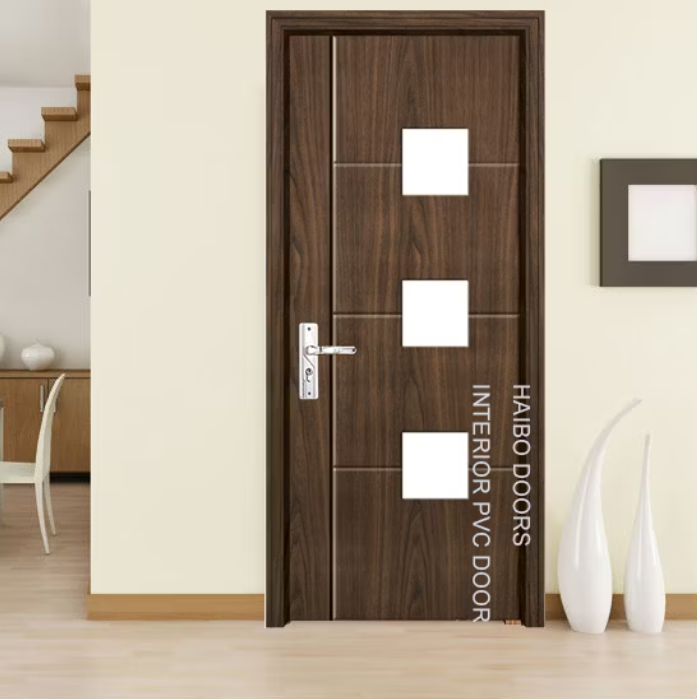Properly installed and maintained, doors can last for decades. However, in both residential and commercial settings, premature wear and operational problems can occur, not due to poor product quality, but rather due to improper or neglected installation. This guide offers comprehensive advice to help you extend the life of your interior and exterior doors, covering everything from pre-installation planning to long-term maintenance.
As an Interior Door Factory committed to quality manufacturing, we believe that good workmanship must be complemented by careful on-site operation and regular maintenance.

Why Installation Quality Directly Affects Door Lifespan
A well-made door is only as good as its installation. No matter how high-quality the materials or how precise the factory specifications, improper installation can compromise its performance in a matter of months. From warping to misalignment, many of the common problems reported by end users are caused by improper or hasty installation, not problems with the door itself.
Structural Integrity Starts at the Frame
The frame is the foundation upon which every door operates. If it is not plumb, level, and square, the door will experience uneven pressure each time it opens or closes. Over time, this leads to:
-
Hinge strain, which causes screws to loosen and the door to sag.
-
Edge wear, as the door scrapes or bumps into the frame.
-
Latching problems, with the lock no longer aligning properly.
Even a slight miscalculation—just a few millimeters off—can force the door to operate under stress, significantly reducing its expected lifespan.
Climate Expansion and Material Movement
Doors, especially those made of natural wood or composite materials, expand and contract slightly with temperature and humidity changes. A well-installed door accounts for this natural behavior through:
-
Consistent spacing around all four edges (known as reveal gaps).
-
Appropriate clearances at the bottom to allow airflow or accommodate floor finishes.
-
Correct hinge depth and spacing to prevent pinching or binding.
If the door is too tightly fitted or has no room for expansion, seasonal changes can cause it to stick, warp, or crack. Conversely, excessive spacing can cause to poor insulation or sound leakage.
Hidden Consequences of Surface-Level Errors
Sometimes, installation mistakes aren't immediately obvious. A slightly tilted frame or uneven sill might seem harmless at first—but over time, they can:
-
Cause water infiltration in exterior doors, into rot or delamination.
-
Put continuous tension on one side of the door, resulting in bowing.
-
Trigger finish degradation, especially in painted or laminated doors, due to uneven pressure or flexing.
In environments with high moisture or temperature fluctuations—like bathrooms, kitchens, or entryways—such errors are amplified, making precise installation even more critical.
Hardware Misalignment Leads to Mechanical Fatigue
Locksets, hinges, closers, and panic bars must be aligned with the movement and weight of the door. Poor alignment can cause:
-
Locks to fail prematurely due to uneven strike contact.
-
Hinges to squeak or deform from bearing unbalanced loads.
-
Automatic closers to drag or resist, shortening their mechanical life.
These failures not only impact the door's usability but also affect security and energy efficiency, especially in commercial buildings where access control and air regulation are crucial.
The Long-Term Cost of Improper Installation
While a poor installation may save time or money upfront, it often results in:
-
Increased maintenance calls and user complaints.
-
Higher long-term costs from repairs or replacements.
-
Shortened warranty coverage, as many warranties are voided by improper installation.
By contrast, a professionally installed door—aligned with manufacturer specifications and adapted to site conditions—can perform reliably for decades, even in high-traffic or demanding environments.
Proper installation doesn't just "set" the door in place; it enables its full performance potential across years of use.
Pre-Installation: Handling, Acclimatization & Site Conditions
Before any screws are drilled, key steps should be followed to avoid structural or aesthetic damage:
-
Storage: Keep doors flat on a level surface in a dry, ventilated room. Avoid stacking vertically or near heat sources.
-
Acclimatization: Let the door sit at the installation site for 48–72 hours so that materials adjust to room humidity and temperature.
-
Inspect the Rough Opening: Ensure the wall opening is square and free of moisture. Measure height, width, and depth at several points.
Installation Best Practices
Correct installation minimizes future adjustments and increases lifespan. Key techniques include:
-
Framing the Opening
-
Use a level to ensure the frame is plumb.
-
Shim evenly around all edges to prevent stress.
-
-
Hinge and Hardware Positioning
-
Use manufacturer-specified hinge locations.
-
Pilot drill all holes to prevent wood splitting.
-
-
Sealing
-
For exterior doors: apply silicone or weather-resistant foam.
-
For interior doors in kitchens or bathrooms: use anti-moisture sealant at the frame base.
-
-
Fastening
-
Do not over-tighten screws; this may warp the door edge.
-
Ensure balanced gap spacing (top and sides: 2–3mm; bottom: 6–10mm for air circulation).
-
Post-Installation Checklist
| Item | What to Check | How Often |
|---|---|---|
| Door swing & clearance | Opens/closes smoothly, no sticking or rubbing | Immediately post-install |
| Hinge security | Screws tight, no wobbling | Every 3–6 months |
| Lock/latch alignment | Engages smoothly without force | Quarterly |
| Bottom seal or sweep | Not dragging, fully intact | Annually |
| Frame stability | No signs of shift or crack | Every 6 months |
Routine Maintenance by Door Type
Different materials require different care strategies:
| Door Type | Cleaning Method | Maintenance Tips | Notes |
|---|---|---|---|
| Solid Wood | Soft cloth + wood polish | Avoid water; re-seal every 2 years | Sensitive to humidity |
| Engineered Wood | Mild detergent + damp cloth | Wipe spills immediately; avoid abrasives | Stable but finish-sensitive |
| PVC Laminated | Neutral cleaner, non-abrasive pad | Check for edge lifting or bubble formation | Moisture-resistant |
| Metal Doors | Dry cloth + stainless steel spray | Check for rust near hardware or joints | Ideal for commercial applications |
| Glass Panel | Glass cleaner + microfiber cloth | Avoid hitting corners; check sealants | Combine with any core material |
Common Issues and Preventive Actions
| Problem | Likely Cause | Prevention Strategy |
|---|---|---|
| Door sticks or jams | Frame shift or moisture swelling | Acclimatize before install, reseal edges |
| Hinges squeak or loosen | Lack of lubrication, overuse | Apply silicone spray, tighten periodically |
| Lock misalignment | Improper latch positioning | Re-align plate, check door sagging |
| Surface discoloration | UV exposure or harsh cleaning | Use curtains/UV film; avoid strong chemicals |
| Warping or bowing | Improper storage or wet environment | Store flat, keep dry, seal wood doors |
In commercial spaces, kitchens, or bathrooms, durability is tested daily. Here are suggestions for enhancing resilience:
-
Use moisture-sealed composite or PVC doors in humid rooms.
-
Apply a door sweep and drip cap for areas prone to wet floors or steam.
-
Choose commercial-grade hinges and latches in public buildings.
-
Inspect bottom edge monthly if near cleaning zones (e.g., mop contact).
-
Install kick plates on lower panels for schools, hospitals, or restaurants.
Training Contractors and End-Users
Providing clear post-installation instructions can reduce future issues. Consider:
-
Including a care guide with each product shipment.
-
Training installers via video or on-site visits.
-
Creating downloadable maintenance checklists for homeowners.
A well-informed user or contractor ensures the product performs to its full potential—and reduces warranty claims.
The strength of a door is not limited to the quality of its materials, it is reflected in every step of its production: storage, installation and daily use. A well-designed door, with attention to detail, will retain its appearance and functionality well beyond its expected service life.
At haibo interior door factory, we not only manufacture durable and elegant products but also support our partners with technical guidance and care resources. For more expert content or customized door solutions, contact our team or explore our product library online.

 English
English русский
русский Français
Français Español
Español bahasa Indonesia
bahasa Indonesia عربى
عربى



